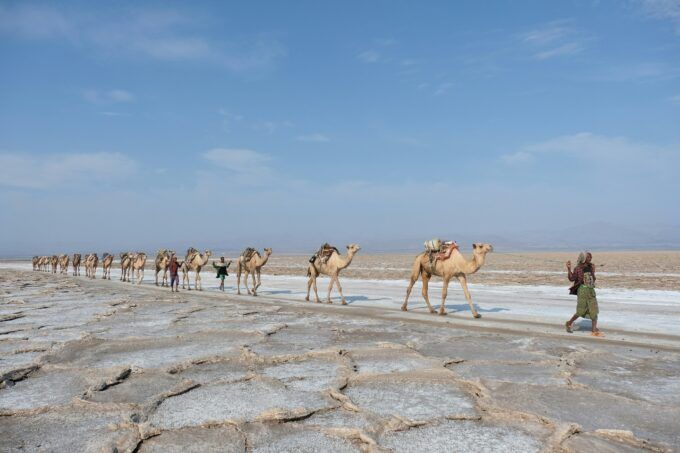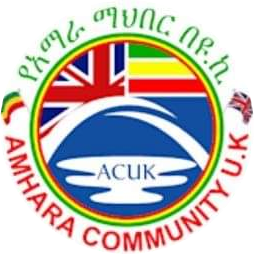MAY 2, 2025
The Plight of Amhara people is the Plight of Ethiopia: A Call for Unity
FacebookTwitterRedditBlueskyEmail

Image by Daniele Levis Pelusi.
The Ethiopian government, led by Prime Minister Abiy Ahmed, is waging war against its own people—specifically, the Amhara.
Amhara men, women, and children are being killed and arrested not for their actions, but for who they are. This is targeted ethnic violence. It is, therefore, genocide.
The term “genocide” is inflammatory, but in the context of Ethiopia (as in Gaza), it is tragically accurate. It describes the mass killing, unlawful arrests, forced displacement, and systemic dehumanization of a specific group—in this case, the Amhara.
As a result of this targeted violence and the fallout from the 2020–2022 war with the TPLF, a severe humanitarian crisis has engulfed the Amhara region:
Nearly a million people are internally displaced, many living in overcrowded and structurally unsafe camps with inadequate sanitation and limited access to water, food, and healthcare. Thousands of children are showing signs of malnutrition, and cholera has spread throughout the region, with over 5,000 reported cases in 2023–2024. This outbreak is linked to poor sanitation and appalling living conditions in the displacement camps.
Deadly Drones
Abiy is using the Ethiopian National Defense Force (ENDF), including the air force, to target Amhara civilians, with drones routinely employed as the weapon of choice. These attacks are blatant violations of international humanitarian law.
The Ethiopian Human Rights Commission (EHRC) has documented lethal air and drone strikes by the Ethiopian Air Force in Amhara cities—including Debre Birhan, Finote Selam, and Bure—all of which resulted in significant civilian casualties and damage to residential areas.
On 17 April, a major drone strike took place in Gedeb Town. AllAfrica reported that “over 100 civilians were killed when a drone targeted a group gathered near Gedeb Primary School for community activities.” In a statement echoing Israeli denials in Gaza, the Ethiopian government claimed they were “targeting” Fano fighters. Survivors are clear: the victims were ordinary people engaged in peaceful community work.
According to Abiy, Fano is a militant group—a derogatory label often used to delegitimize and criminalize freedom fighters or community militias—and the supposed target of his military campaign. In reality, Fano is a community-based defense force made up of local civilians and former members of the Amhara Special Forces (ASF), which was decommissioned by the government in 2023. In fact, the government is ‘targeting’ not just Fano, but Amhara civilians—both young and old.
The word Fano (Amharic) means “volunteer” or “patriot.” Widely regarded within Amhara communities as a heroic force—and rightly so—Fano became extremely active during the Tigray War, defending not just Amhara communities from TPLF fighters, but also civilians throughout the region and beyond. Since the disbanding of the ASF, Fano has taken on a greater role in protecting its people from aggression by the ENDF.
They are now resisting not only government forces but also the Oromo Liberation Army (OLA), the armed wing of the Oromo Liberation Front (OLF), an ethnic nationalist party that is part of the ruling coalition.
The OLF was outlawed and branded a terrorist organization under the previous regime. However, when Abiy Ahmed—an Oromo himself—came to power in 2018, the designation was lifted, and the OLF was welcomed back into the political mainstream.
Its military unit, however, is still labeled a terrorist organization by the Ethiopian government, and with good reason. Despite this classification, there is clear evidence that the OLA has operated in parallel with, and in some cases in coordination with, the ENDF and Oromo Special Forces (OSF) in attacks against Amhara civilians.
The OLA claims to fight for greater autonomy and self-determination for the Oromo people—Ethiopia’s largest ethnic group, alongside the Amhara. Its goals are framed within Ethiopia’s divisive system of ethnic federalism, which has led to the establishment of regional states based on ethnic majorities.
Enshrined in the country’s 1995 constitution, Ethnic Federalism is a misguided policy that has institutionalized division along ethnic lines, deepened historical grievances, exacerbated inter-communal tensions, and fueled cycles of violence. This system lies at the root of the violence against Amhara communities; it fans the flames of tribalism—a societal poison embedded within Ethiopia’s political structure.
Ethnic Division by Design
The hope that swept the country when Abiy came to power quickly evaporated as it became clear that, despite his rhetoric, Abiy’s politics are not rooted in unity and reform but in division and domination. He has empowered Oromo nationalist elements while ruthlessly suppressing Amhara interests.
Abiy is a narcissistic, deeply divisive figure—more concerned with consolidating power and perpetuating his rule than with the wellbeing of the Ethiopian people. He is autocratic and, like all such figures, paranoid. Criticism of any kind—from any group or individual—is not tolerated; arrest and torture are common consequences.
And while most of the population lives in grinding poverty, Abiy pours resources into vanity projects and military hardware—not to defend the country from external threats, but to terrorize his own people and suppress internal dissent.
Under his leadership, both longstanding and newly inflamed ethnic tensions have been weaponized, turning Ethiopia into a federation of competing ethnic and tribal interests rather than a unified state.
This inflamed tribalism isn’t unique to Ethiopia—it is part of a global trend. The loudest voice may be Trump in the U.S., but autocratic, so-called populists are in power across the world. From India to Hungary, Israel to Brazil, nationalism has taken root, eroding democratic institutions and trampling on human rights and international law.
Ethiopia is one of the most tragic and violent manifestations of this global regression—and, with 94% of its population experiencing poverty at some level, it remains one of the poorest nations to fall under the shadow of such political extremism.
Unite for Amhara
The plight of the Amhara people is the plight of Ethiopia. There can be no substantive social or economic development in the country without peace.
The genocide against the Amhara is one of the worst humanitarian crises unfolding on the African continent—yet Africa remains largely silent. Where is the African Union on this issue? Based in Addis Ababa and often outspoken on conflicts in Sudan and Chad, the AU has said and done little to support the Amhara.
The United Nations, too, must act. An independent investigation into human rights violations and potential acts of genocide is long overdue. Entire Amhara communities have been devastated: tens of thousands are dead, over two million are estimated to be displaced, and hundreds of thousands—perhaps as many as 500,000—falsely imprisoned. Those still living in their homes do so under the shadow of fear and repression imposed by Abiy Ahmed’s violent regime.
Ending this crisis will require both internal and external pressure: a sustained, large-scale protest movement from within Ethiopia, coupled with economic and political action from international donors and institutions—who, to date, have remained silent.
But as long as ethnic federalism remains in place, lasting peace in Ethiopia seems unlikely. Any political system—anywhere—that entrenches division rather than fosters unity must be dismantled. The future of Ethiopia—and the world—depends on adopting structures and values that bring people together, not tear them apart.
Unity rooted in social justice, compassion, and cooperation is the only path to lasting peace. Unity is the greatest threat to regimes like Abiy’s—and the thing they fear most. When people stand together and speak with one voice, no government, no matter how brutal, can silence them.
Ethiopians across all communities and ethnicities must confront the truth of what is happening, acknowledge the suffering of the Amhara people, and—sharing in their pain—stand beside them to demand an end to the killing and persecution.

